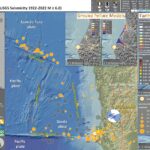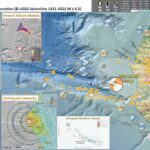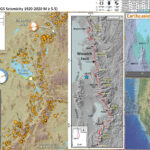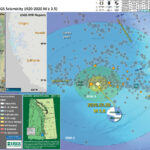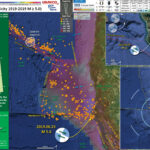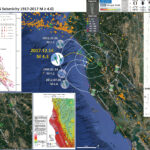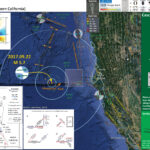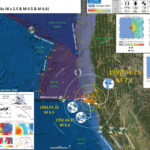Initial Narrative Well, it has been a very busy week. I had gotten back from the American Geophysical Union Fall Meeting in Chicago late Saturday night. I had one day to hang out with my cats before I was to…
Earthquake Report: M 5.7 & 6.2 Mendocino triple junction
I was returning from New Orleans where I was attending the American Geophysical Union Fall Meeting. There was a short layover in Denver and I had a short time to find some food, which is challenging with my dietary restrictions.…
Earthquake Report: Mendocino triple junction
Well, it was a big mag 5 day today, two magnitude 5+ earthquakes in the western USA on faults related to the same plate boundary! Crazy, right? The same plate boundary, about 800 miles away from each other, and their…
Earthquake Report: Salt Lake City
As I was waking up this morning, I rolled over to check my social media feed and moments earlier there was a good sized shaker in Salt Lake City, Utah. I immediately thought of my good friend Jennifer G. who…
Earthquake Report: Mendocino fault
I was in Humboldt County last week for the Redwood Coast Tsunami Work Group meeting. I stayed there working on my house that a previous tenant had left in quite a destroyed state (they moved in as friends of mine).…
Earthquake Report: Mendocino triple junction
Well, I was on the road for 1.5 days (work party for the Community Village at the Oregon Country Fair). As I was driving home, there was a magnitude M 5.6 earthquake in coastal northern California. https://earthquake.usgs.gov/earthquakes/eventpage/nc73201181/executive I didn’t realize…
Earthquake Report: Laytonville (northern CA)!
This morning there was a small earthquake in a region of northern California between two major faults that are part of the Pacific-North America plate boundary. The M 4.3 earthquake occurred between the San Andreas fault (SAF) to the west…
Earthquake Report: Mendocino fault! (northern California)
I was driving around Eureka today, running to the appliance center to get an appliance (heheh). I got a message from a long time held friend (who lives in Salinas, CA). They asked me if I was OK, given that…
Earthquake Report: 1992.04.25 M 7.2 Petrolia
The 25 April 1992 M 7.1 earthquake was a wake up call for many, like all large magnitude earthquakes are. I have some updated posters as of April 2021 (see below). Here is my personal story. I was driving my…
Earthquake Report: 2016 Summary Cascadia
Here I summarize the seismicity for Cascadia in 2016. I limit this summary to earthquakes with magnitude greater than or equal to M 4.0. I reported on all but five of these earthquakes. I put this together a couple weeks…

